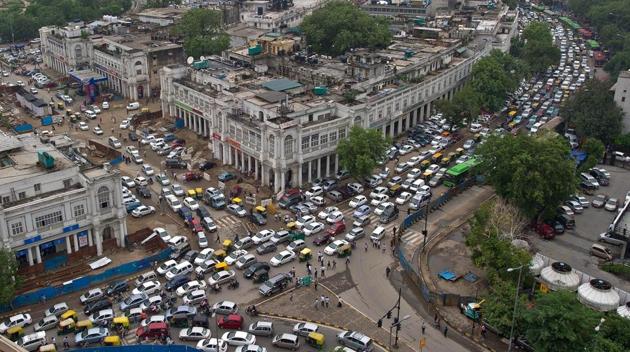Traffic infrastructure at Bakhtawar and Rajiv Chowk to be revamped
According to Mohammed Imran Raza, additional deputy secretary, and secretary of the Regional Transport Authority (RTA), traffic infrastructure at these two junctions will be redesigned to minimise road fatalities by July-end.
After experimenting with Shankar Chowk to make it pedestrian-friendly, the district administration along with Haryana Vision Zero (HVZ) is working on revamping traffic infrastructure at Bakhtawar Chowk and Rajiv Chowk.

According to Mohammed Imran Raza, additional deputy secretary, and secretary of the Regional Transport Authority (RTA), traffic infrastructure at these two junctions will be redesigned to minimise road fatalities by July-end.
The administration’s primary focus is to improve design elements at Bakhtawar Chowk and Rajiv Chowk, to facilitate the movement of vehicles at these important junctions.
A study by HVZ found that four arms of Bakhtawar Chowk have unequal carriageway widths, which makes it confusing for the vehicles moving in different directions. Gurpreet Singh, senior road safety associate, HVZ, said, “The key intervention will be to create pedestrian crossing on the intersection as hundreds of commuters face difficulties in crossing the road everyday, and they have to wait for an opportune time to make a dash to the other side because of the high speed of traffic. This not only endangers the lives of pedestrians, but also makes the road prone to accidents.”
The district administration was prompted by the high rate of accidents involving pedestrians to make traffic interventions at the stretch. Singh also said that during non-peak hours the large space at the mouth of the intersection also causes confusion among motorists. The situation is further compounded by auto-rickshaws travelling on the wrong to avoid red lights.
“The lanes will be shifted to align with the junction. For easy vehicular movement, the mouth of the junction is also being tightened. The existing islands are being made pedestrian-friendly and the police post in the centre of the junction has been removed,” said Raza.
Likewise, Rajiv Chowk, which connects commuters to the Delhi-Gurgaon Expressway, Sohna Road, Civil Lines, Medanta Hospital will also see changes in traffic movement. Traffic personnel conducted an impact study by installing bollards and jersey barriers to tighten the mouth of intersection as well, the HVZ team said.
Raza said, “The corridor built for Non-Motorised Transport (NMT) at Rajiv Chowk is hardly used by pedestrians, so we plan to create an end-to-end pedestrian pass at the surface level for an easy passage to commuters. Also, traffic lights will be installed and zebra crossings made, both of which are currently missing.”
The administration will spend ₹5 lakh to revamp the key junctions. Raza said, “The road safety fund has been utilised to revamp the two junctions. We have asked for financial assistance from the state government to solve traffic issues in the remaining identified spots.”
According to the HVZ data, more than 1,600 people have died in the last three years due to flaws in road engineering and lack of enforcement of rules. In 2016, 420 fatalities were reported in the city, which increased to 458 in 2017. It further spiked to 464 in 2018. Mostly, these accidents took place on 21 black spots, as well as arterial roads in the city. Nearly 45% of pedestrians and 38% of two-wheeler riders were victims of poor road-engineering and lack of enforcement.






